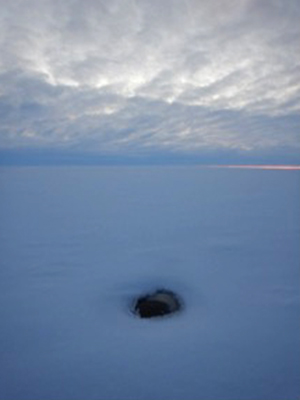
Thermokarst lakes emit methane, a potent greenhouse gas, primarily through the process of ebullition (bubbling). Previous work has shown that, in regions with hydrocarbon reservoirs, deepening thaw beneath these lakes and intersections with faults, can open conduits for natural gas (i.e. geologic methane) to escape to the atmosphere.
With global temperatures on the rise, it’s important to understand if further permafrost thaw will impact the distribution of and emissions from geologic methane seeps. Due to the limitations of field-based investigations and optical satellite imagery in identifying these phenomena, a different remote sensing approach is needed. Here, we show preliminary results of using L-band space borne synthetic aperture radar (SAR) to detect geologic methane seeps in northern Alaskan lakes.
Unable to attend in person? Join online via your computer or smart phone (audio and visual)
Meeting ID: 758 151 669
One tap mobile:
+16699006833,,758151669# US (San Jose)
+19292056099,,758151669# US (New York)
Or dial by your location :+1 669 900 6833 or +1 646 558 8656